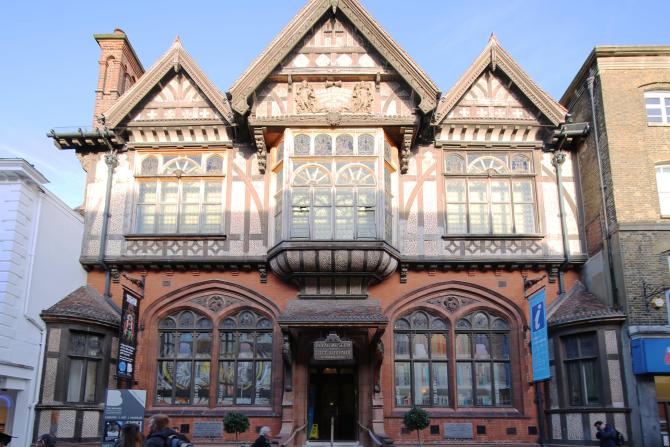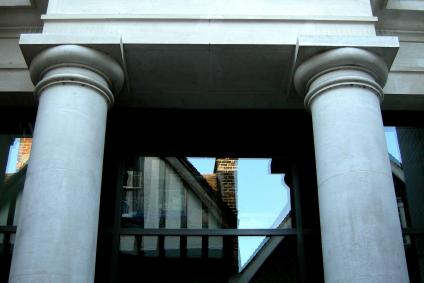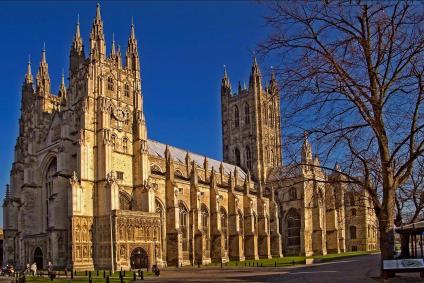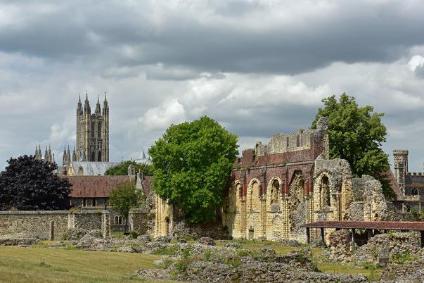The Beaney House of Art and Knowledge is the central museum, library and art gallery of the city of Canterbury, Kent, England. It is housed in a Grade II listed building. Until it closed for refurbishment in 2009, it was known as the Beaney Institute or the Royal Museum and Art Gallery. It reopened under its new name in September 2012. The building, museum and art gallery are owned and managed by Canterbury City Council; Kent County Council is the library authority. These authorities work in partnership with stakeholders and funders.
History
Construction
The Tudor Revival Beaney Institute building was designed by architect and City surveyor A.H. Campbell in 1897 and opened on 11 September 1899 at a cost of £15,000, after Dr James George Beaney left £10,000 to Canterbury for the institute, and Canterbury City Council added £5,000 so that Beaney's institute could accommodate the city's existing museum and library, which was transferred to the Beaney Institute building with the added name "Royal" in 1898. That existing museum and library had originated on Guildhall Street in 1825 as the Canterbury Philosophical and Literary Institution, been bought by the City in 1846 and was established as the Canterbury Museum and Public Library in 1858; the Guildhall Street building in Sun Yard now contains the local branch of Debenhams and bears a blue plaque. Beaney was a colourful character, whose professional life was beset by controversy with the Melbourne medical establishment. His bequest was left for "the erection and endowment of an institute for working men" in which his own portraits were to be hung in the main hall.
The public contribution to the Institute's fittings included £1,050 from Joshua Cox, and a gift from the Slater family enabled the 1934 Slater wing with art gallery to be built at the back. The free library and reading rooms were on the ground floor; the museum and art gallery were on the first floor; the basement contained the natural history department, storage and workroom. The mahogany cases came from the British Museum, paid for by W. Oxenden Hammond and a Miss Lawrence, and adapted by Cubitts. The Victoria and Albert Museum and Royal Doulton lent items for display.
From at least 1899 to 1913, Francis Bennett-Goldney (1865−1918) was the honorary curator, with Henry Thomas Mead as assistant or deputy curator and librarian and Henry Fielding as secretary. Between 1913 and 2008, the library stock increased from 12,000 volumes to two million including 17th- and 18th-century texts, maps, local Media and directories. It was designed with rooms for newspapers and journals, and a magazine room as well as lending and reference libraries. The 200 Scott-Robinson books about Kent are part of the local history collection. In the 1944 film A Canterbury Tale, the Beaney Institute building was director Michael Powell's inspiration for the Colpeper Institute. The Joseph Conrad centenary was celebrated there in 1957, with an exhibition of his books and papers.
Ken Reedie has been curator since the early 1970s. There was an exhibition of Giles cartoons in the gallery from 20 December 2006 to 3 February 2007. For a century there has been a tradition of pavement art in front of the building. Craig Taylor was among the last in this tradition, and after his death in 2009 the public left floral tributes on the pavement.
Refurbishment
Together with the associated project to redevelop the Marlowe Theatre site, the Beaney's 2009–2012 refurbishment was intended to "transform that part of the city centre into a vibrant cultural quarter". Bidding started in 2003. The Heritage Lottery Fund granted the project £6.5 million for redevelopment of building and services to provide space, facilities, displays, an extension, disabled access, a glass lift and educational spaces. Extra space would permit display of those collections previously hidden from public view. The intention was also to extend the gallery and provide further galleries for exhibitions.
Plans for the library included an enlarged space for books and for a children's library and local studies centre, with a space for teenagers. Local people including teachers were involved with planning. Canterbury City Council, Kent County Council, private sources and donations made up the project funding to £11.5 million, with the South East England Development Agency (SEEDA) contributing £975,000. Planners were John Miller & Partners; architects were Sidell Gibson who oversaw restoration of Windsor Castle after the fire; interior designers are Casson Mann, who have devised a theme of "explorer points".
From 30 January to 28 February 2009 the Museum held a Hungry for Heritage exhibition, supported by a £24,700 grant from the Heritage Lottery Fund, in which local young people created pictures of the soon-to-be-missed exhibits. These pictures were to be displayed in Canterbury cafes while the Beaney was closed. The building closed for refurbishment on 28 February 2009. By 8 June 2009 the two councils had cleared out all exhibits, partitions and office material from the building, exposing the colours of early decorations in the process. They had great difficulty in removing Sidney Cooper's huge Charlie the Bull from the stairwell. The project attracted some controversy. An archaeological dig by the Canterbury Archaeological Trust started on the site of the new extension in September 2009.








